Understanding the Vital Role of Lifestyle in Skin Recovery
Post-treatment skin recovery is a complex process influenced by various factors beyond medical interventions alone. Recent scientific insights reveal that lifestyle choices—ranging from diet and exercise to stress management and environmental protection—have significant impacts on the skin's ability to heal and rejuvenate after cosmetic or dermatological procedures. This article explores how adopting healthy habits can optimize treatment outcomes, accelerate healing, and promote long-term skin health.
The Impact of Lifestyle Choices on Skin Recovery After Treatments
How do lifestyle choices impact skin recovery after treatments and procedures?
Lifestyle habits significantly influence how efficiently your skin heals after cosmetic or dermatological procedures. Adopting healthy routines can improve healing times, enhance results, and reduce risks of complications.
Protecting your skin from sun damage is essential. Daily application of broad-spectrum sunscreen with SPF 30 or higher, combined with wearing protective clothing like hats and sunglasses, shields the skin from ultraviolet rays that can hinder recovery and cause further aging.
Avoiding smoking and limiting alcohol intake are crucial steps. Smoking constricts blood vessels, reducing oxygen and nutrient flow to the skin, which delays healing and increases the risk of wound complications. Alcohol can impair immune response and dehydrate the skin, making recovery less efficient.
Maintaining a nutritious diet rich in antioxidants, such as vitamins C and E, omega-3 fatty acids, fruits, vegetables, and lean proteins, supports collagen synthesis and reduces inflammation. Proper hydration—drinking at least 8 glasses of water daily—ensures the skin remains resilient and aids tissue repair.
Gentle skincare routines also promote better healing. Using mild cleansers, moisturizing regularly with products containing hyaluronic acid or ceramides, and avoiding harsh exfoliants or irritants help maintain the skin barrier and prevent complications.
Finally, managing stress and ensuring quality sleep are vital. Techniques like meditation or yoga can lower inflammation, while sufficient sleep (7-9 hours per night) supports cellular regeneration. Combined, these habits foster an optimal environment for skin recovery, leading to better aesthetic results and healthier skin overall.
Diet, Nutrition, and Hydration: Cornerstones of Skin Healing
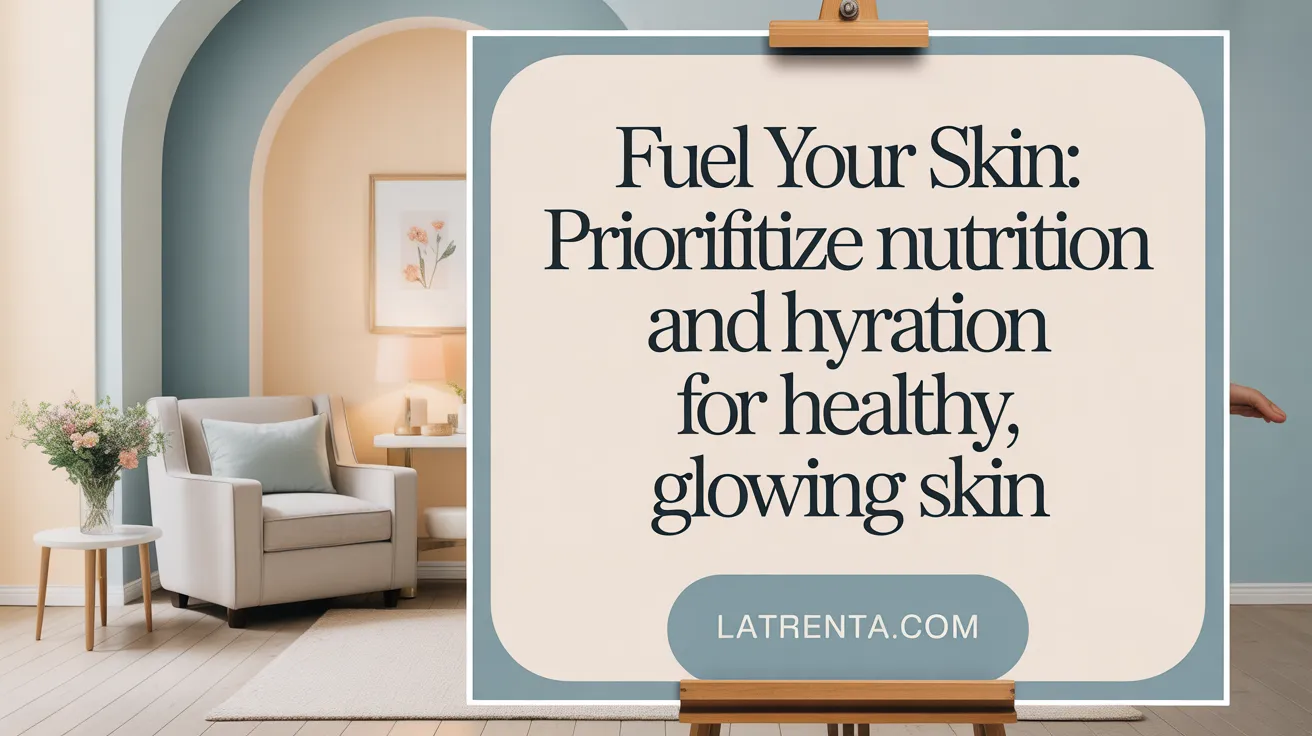
What role do diet, nutrition, and hydration play in post-treatment skin recovery?
A balanced diet, proper nutrition, and adequate hydration are vital for efficient skin healing after cosmetic or dermatological treatments. They supply essential nutrients that support the body's repair mechanisms, including collagen production, cellular regeneration, and immune response.
Nutrients like vitamins A, C, E, zinc, and iron are especially important. Vitamin C, for example, plays a key role in collagen synthesis, helping to restore skin firmness and elasticity. Zinc supports wound healing and tissue regeneration, while iron aids in oxygen delivery to recovering tissues.
Proteins are the building blocks of skin tissue, facilitating regeneration and repair. Healthy fats, particularly omega-3 fatty acids, reduce inflammation and support the skin's barrier function.
Hydration is equally crucial. Drinking sufficient water ensures good circulation, promotes toxin removal, and keeps tissues moist, which accelerates healing and enhances skin resilience.
Conversely, certain foods should be avoided after treatment. Sugary, processed foods and excess alcohol can impair immune function and prolong recovery. Spicy foods and caffeine may also cause irritation or inflammation, slowing down the healing process.
In essence, consuming nutrient-dense foods such as fruits, vegetables, lean proteins, and healthy fats, along with staying well-hydrated, creates the ideal environment for skin recovery. This holistic approach minimizes complications, enhances aesthetic results, and supports long-term skin health.
Exercise and Physical Activity: Enhancing Skin Healing and Treatment Outcomes
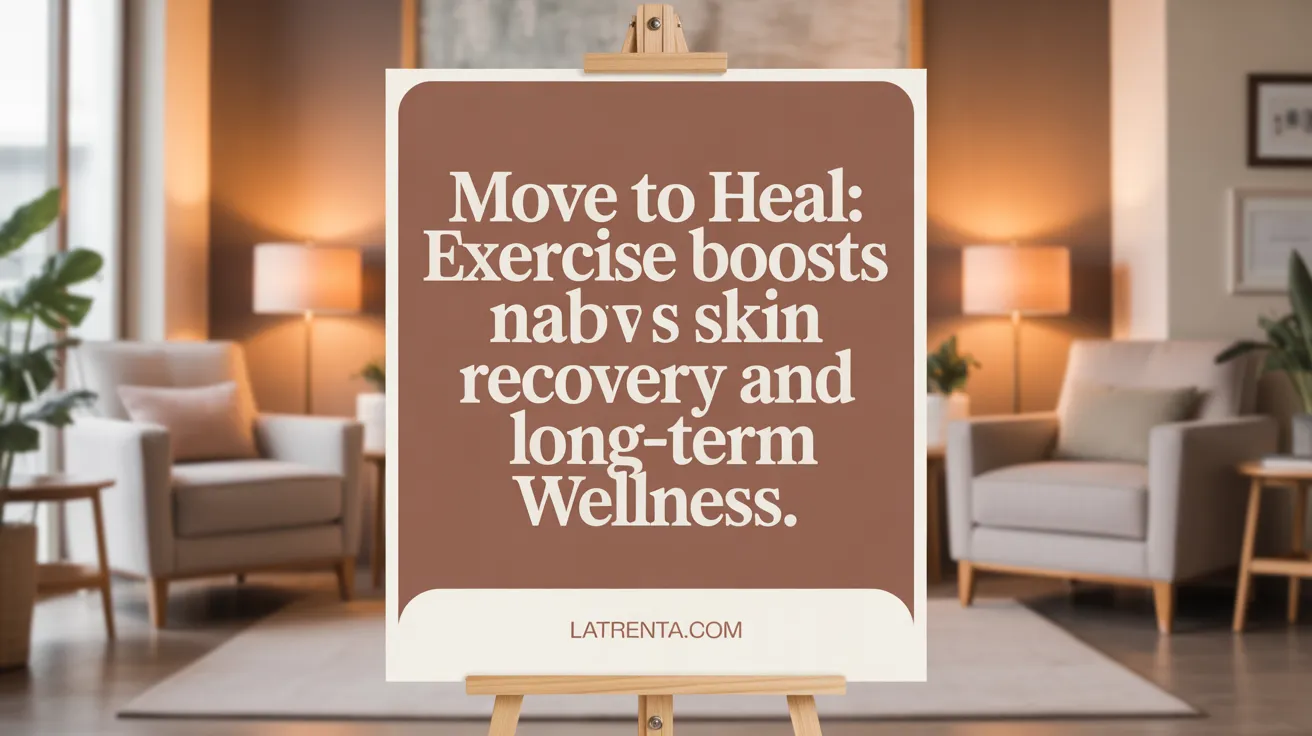
How do exercise and physical activity affect skin healing after treatments?
Engaging in regular, moderate exercise plays a significant role in supporting skin recovery after aesthetic procedures. Exercise improves blood flow and oxygen delivery to the skin and wound sites, which are crucial for tissue repair and rapid healing.
Enhanced circulation means nutrients, growth factors, and immune cells reach damaged tissues more efficiently, reducing recovery time and improving results. Studies show that increased blood flow can enhance collagen synthesis, which is fundamental for maintaining skin elasticity and firmness.
Moreover, physical activity stimulates mitochondrial biosynthesis—the process by which cells produce energy—helping to rejuvenate skin cells and promote healthy skin structure.
Exercise also reduces stress and lowers cortisol levels that can otherwise break down collagen, speeding up skin aging and impeding healing. By lowering chronic inflammation, regular activity creates an optimal environment for tissue repair.
In addition to cellular benefits, exercise fosters better hydration and thermoregulation of the skin, which further supports recovery.
However, it’s essential to avoid overexertion during early healing phases. Excessive or intense physical activity might cause irritation, swelling, or reopen healing wounds. Light activities such as walking, yoga, or gentle stretching are better suited during initial recovery stages, complemented by following your healthcare provider's wound care guidelines.
By incorporating appropriate exercise routines, individuals can enhance their skin’s healing capacity, prolong cosmetic results, and improve overall skin health.
Environmental Influences and the Imperative of Sun Protection During Recovery
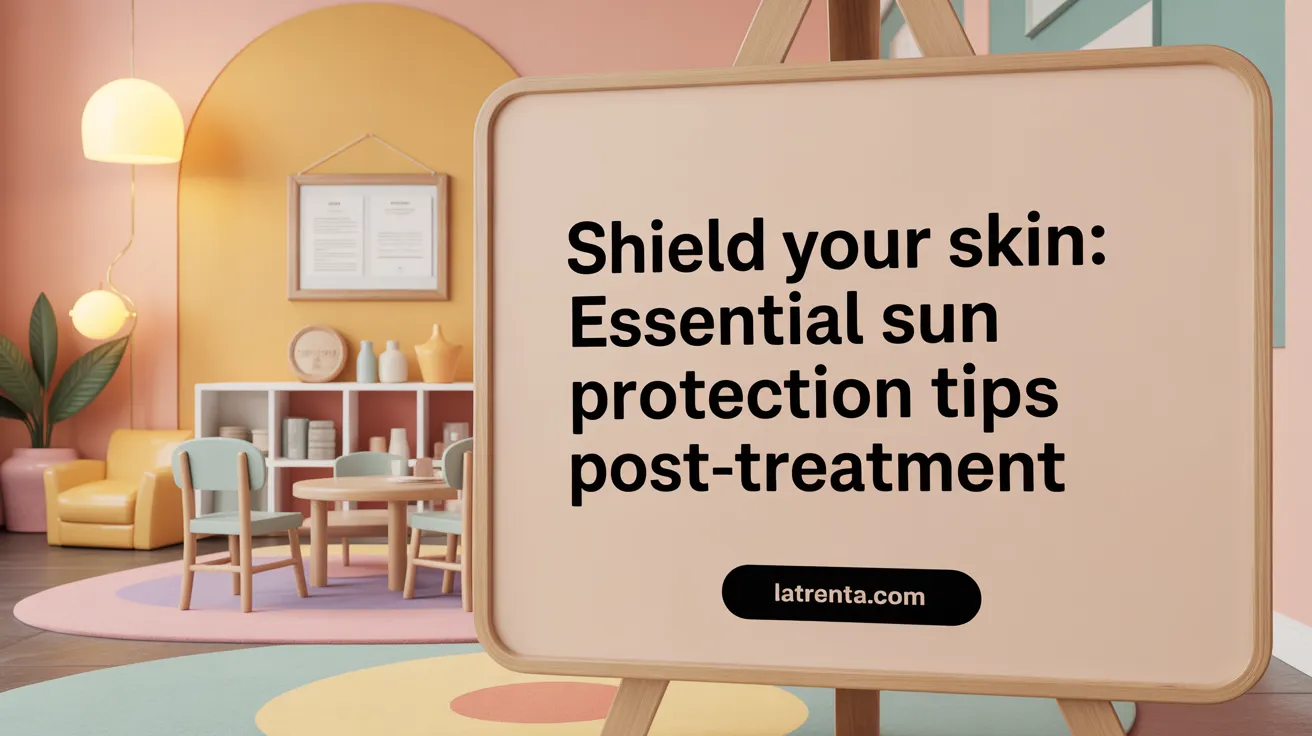
What environmental factors influence post-treatment skin recovery, and why is sun protection important?
After skin treatments like laser resurfacing, chemical peels, or micro-needling, the skin becomes more sensitive and vulnerable to external environmental factors. UV radiation from the sun is one of the most significant threats, as it can increase inflammation, produce free radicals, and accelerate the breakdown of collagen and elastin fibers. These effects can lead to pigmentation issues, delayed healing, and faster skin aging.
Pollution and harsh weather conditions, such as extreme cold, wind, and low humidity, can also impair recovery. Pollutants introduce free radicals that damage skin cells, impair barrier function, and promote inflammation. Additionally, infrared radiation and high-energy visible light (HEV) exposure can contribute to oxidative stress, further hampering skin regeneration.
Since post-treatment skin barrier function is temporarily weakened, it becomes more susceptible to these environmental aggressors. Without proper protection, the delicate skin may experience increased redness, hyperpigmentation, or even scarring. Moreover, exposure to these factors can prolong healing times and compromise the longevity of aesthetic results.
To safeguard your skin, diligent sun protection practices are essential. Applying broad-spectrum sunscreens containing at least SPF 30 to 50 regularly provides a physical and chemical barrier against UV rays. Wearing protective clothing like wide-brimmed hats, sunglasses, and UV-protective garments helps shield the skin from direct sunlight. Seeking shade during peak hours, usually between 10 a.m. and 4 p.m., further minimizes exposure.
In addition to UV protection, limiting exposure to pollution by avoiding crowded, heavily polluted areas and using antioxidant-rich skincare can mitigate free radical damage. During extreme weather conditions, gentle skincare routines, hydrating moisturizers, and barrier creams can support skin resilience.
Maintaining these protective measures not only promotes optimal healing but also helps preserve the effects of aesthetic treatments. Consistent sun safety habits reduce the risk of premature aging, pigmentation irregularities, and skin cancers, ensuring your skin remains healthy and vibrant in the long term.
Best Practices in Post-Treatment Skincare and Aftercare Routines
What are the best practices for post-treatment skincare and care routines?
Post-treatment skincare is crucial for ensuring proper healing, minimizing side effects, and extending the longevity of aesthetic results. The foundation of effective aftercare involves gentle cleansing using mild, non-irritating cleansers that do not strip the skin of its natural oils. Following cleansing, applying hydrating serums—especially those containing hyaluronic acid, vitamin C, peptides, or growth factors—can boost skin hydration, improve brightness, and stimulate collagen production.
Moisturizers play a key role in restoring skin barrier function. Opt for products suited to your skin type, preferably those formulated with soothing ingredients like ceramides or aloe vera. Protecting the skin from UV damage is essential, so applying a broad-spectrum sunscreen with at least SPF 30 every day helps prevent pigmentation and further aging.
It's vital to avoid harsh skincare ingredients such as retinoids, exfoliating acids like AHAs and BHAs, and alcohol-based products during the initial recovery phase. These can irritate sensitive post-treatment skin and hinder healing.
Follow your healthcare provider’s specific instructions, which may include avoiding touching or massaging treated areas and using cold compresses to alleviate swelling or discomfort. Proper hydration by drinking plenty of water supports tissue repair and retains skin suppleness.
In addition to topical measures, scheduling regular follow-up appointments ensures your skin responds well to treatments and allows adjustments if needed. Incorporating medical-grade skincare and adhering to personalized advice maximizes healing, enhances results, and preserves youthful skin for the long term.
Long-Term Skin Health and Aging: The Lasting Effects of Lifestyle Choices
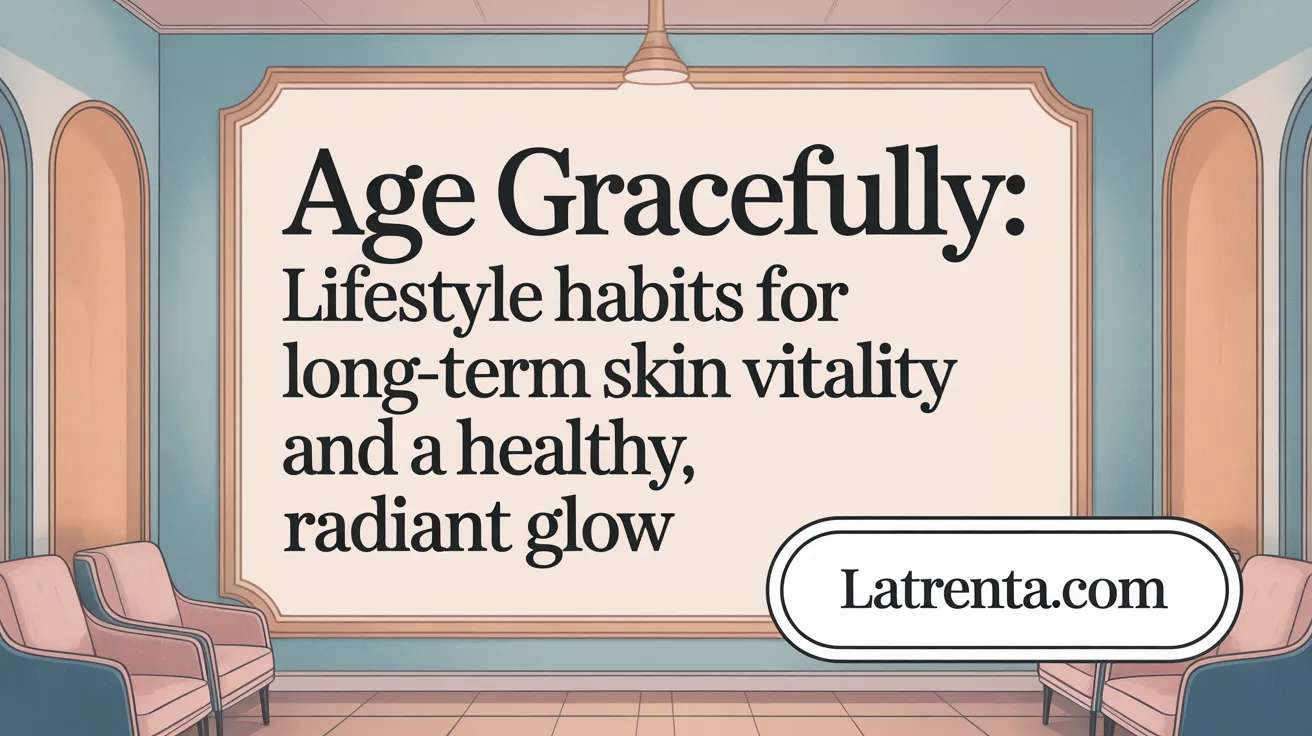
How do lifestyle factors affect long-term skin health and aging after treatments?
Lifestyle habits play a pivotal role in determining the durability of results from skin treatments and the overall health of your skin as you age. Regular use of sun protection—such as a broad-spectrum sunscreen with at least SPF 30—and wearing protective clothing helps shield the skin from harmful UV rays, which can cause premature aging signs like wrinkles and dark spots.
A balanced diet rich in antioxidants, vitamins A, C, and E, and omega-3 fatty acids supports collagen production, reduces inflammation, and enhances skin resilience. These nutrients help repair skin damage, strengthen cell walls, and defend against free radicals that accelerate aging.
Avoiding smoking is particularly important because tobacco reduces blood flow to the skin, damages elastic fibers, and promotes early sagging and wrinkles. Managing stress through relaxation techniques and ensuring sufficient sleep (7-9 hours per night) are essential for cellular repair, immune function, and maintaining skin firmness.
In addition, adopting a gentle skincare routine—using products suited to your skin type, avoiding harsh ingredients—and engaging in regular exercise improve blood circulation, delivering vital nutrients and oxygen to skin cells. This combination of healthy practices helps preserve youthful elasticity, promotes healing, and prolongs treatment benefits over time.
Stress Management: A Key Component in Effective Skin Healing
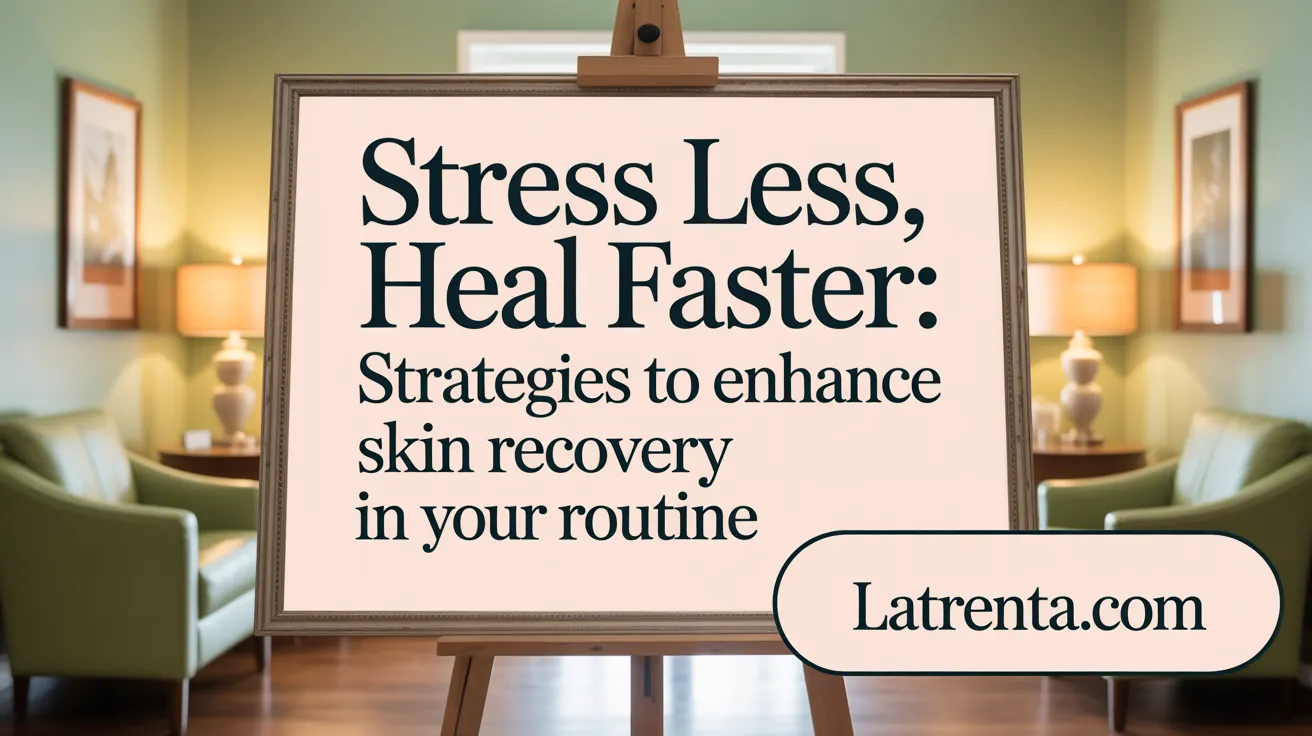
What is the relationship between stress management and skin healing after treatments?
Managing stress effectively is essential for optimal skin recovery following cosmetic procedures or skin treatments. When the body experiences stress, it releases hormones like cortisol and catecholamines, which can impair various healing processes. Elevated cortisol levels promote collagen breakdown and suppress immune function, delaying wound healing and increasing the risk of infections.
Stress activates the body’s central axes—the hypothalamic-pituitary-adrenal (HPA) axis and the sympathetic-adrenal-medullary (SAM) axis—leading to increased inflammation and immune suppression. This hormonal response can hinder the infiltration of immune cells needed for tissue repair and reduce fibroblast activity, which is vital for collagen synthesis.
Conversely, reducing stress lowers cortisol and supports a healthier inflammatory response essential for tissue regeneration. Techniques such as mindfulness meditation, yoga, regular exercise, and engaging in social support networks help in lowering stress hormones, thereby promoting faster and more efficient skin healing. Incorporating these practices into recovery routines makes a meaningful difference in treatment outcomes.
Techniques to reduce stress during recovery
To support skin healing, individuals can adopt several stress-reduction strategies:
- Mindfulness and meditation: These practices help calm the nervous system and reduce cortisol levels.
- Physical activity: Gentle exercises like walking, yoga, or tai chi improve mood and decrease stress hormones.
- Social support: Spending time with friends, family, or participating in support groups fosters emotional well-being.
- Relaxation therapies: Deep breathing, aromatherapy, or listening to calming music can lower stress during recovery.
- Adequate sleep: Ensuring 7-9 hours of quality sleep boosts the body’s repair mechanisms and reduces stress-related hormone fluctuations.
Consequences of poor stress control on skin repair
Neglecting stress management can prolong inflammation and slow down the healing process. Elevated stress levels can lead to increased production of cortisol, which hampers collagen production and weakens skin’s structural integrity. Additionally, high stress impairs immune defense, increasing the risk of complications such as infections or delayed wound closure.
Chronic stress can also cause skin issues like increased redness, irritation, and even hyperpigmentation, further complicating recovery. Over time, reduced collagen synthesis and impaired cellular repair contribute to premature aging signs such as fine lines and sagging, undermining the aesthetic benefits of treatments.
Benefits of mindfulness, exercise, and social support
Implementing mindfulness practices, engaging in regular exercise, and fostering social connections have proven benefits for skin health and healing. These activities help to lower cortisol levels, enhance circulation, and improve immune function, all of which facilitate efficient tissue repair.
Exercise boosts blood flow, delivering more oxygen and nutrients to healing tissues, while social support helps buffer stress perception and promote emotional resilience. Mindfulness reduces anxiety and prevents the excessive hormonal responses that impair recovery.
Incorporating these stress-relief strategies into the post-treatment routine does not only support better healing but also promotes overall skin vitality, helping maintain youthful, resilient skin over time.
Scientific Mechanisms Connecting Lifestyle to Enhanced Skin Recovery
What are the scientific and health-based mechanisms linking lifestyle to skin recovery?
Lifestyle choices significantly impact the body's ability to repair and rejuvenate the skin after treatments or injuries. One of the fundamental processes involved is increased blood flow to the skin, which is stimulated by regular exercise. Enhanced circulation delivers more oxygen and essential nutrients—such as amino acids, vitamins, and minerals—directly to skin tissues. This sustains cellular regeneration and collagen production, vital for maintaining skin firmness and elasticity.
Antioxidants play a crucial role in protecting skin cells. Engaging in healthy habits helps strengthen the body's natural defenses against oxidative stress caused by reactive oxygen species (ROS). Reduced oxidative damage minimizes molecular deterioration, such as lipid peroxidation, which accelerates skin aging. Consuming antioxidant-rich foods like berries, green leafy vegetables, nuts, and seeds supports this defense.
Hormonal balance and vascular health are further influenced by lifestyle factors. Regular physical activity and stress management help maintain healthy hormone levels that regulate blood vessel function. Good vascular health ensures efficient delivery of nutrients and removal of waste products from skin cells.
Moreover, lifestyle behaviors that avoid harmful habits, such as smoking and excessive alcohol consumption, improve immune function and stabilize hormone levels. Smoking, in particular, reduces blood flow and damages collagen and elastin, impairing skin healing and increasing aging signs.
Finally, proper nutrition rich in proteins, vitamins A and C, zinc, and omega-3 fatty acids directly supports collagen synthesis and immune response. Together, these mechanisms create an environment that promotes faster tissue repair, better hydration, and increased skin resilience.
Collectively, maintaining a healthy lifestyle enhances the skin's natural recovery processes, helping achieve more youthful, firm, and well-hydrated skin post-treatment.
Embracing Holistic Lifestyle Choices for Radiant, Long-Lasting Skin Recovery
The journey to optimal post-treatment skin recovery extends well beyond the clinic. Integrating supportive lifestyle habits—including balanced nutrition, protecting the skin from environmental harm, staying physically active, managing stress, and adhering to precise skincare regimens—creates the foundation for enhanced healing and enduring treatment benefits. Understanding the science behind these influences empowers individuals to actively participate in their skin’s restoration and rejuvenation. Ultimately, a holistic approach is key to achieving radiant, healthy skin that not only recovers efficiently but also ages gracefully over time.
References
- The Impact of Lifestyle on Skin Aging and How Aesthetic Treatments ...
- Unlocking Your Best Skin: The Vital Role of Post-Treatment Care
- The Role of Lifestyle Factors in Cosmetic Surgery
- Recommended Lifestyle Changes After Skin Booster Treatment for ...
- The Potential of Exercise on Lifestyle and Skin Function
- Your Comprehensive Guide to Post-Treatment Care: Ensuring the ...
- Eating Smart for Skin Healing After Treatments - Pulse Light Clinic
